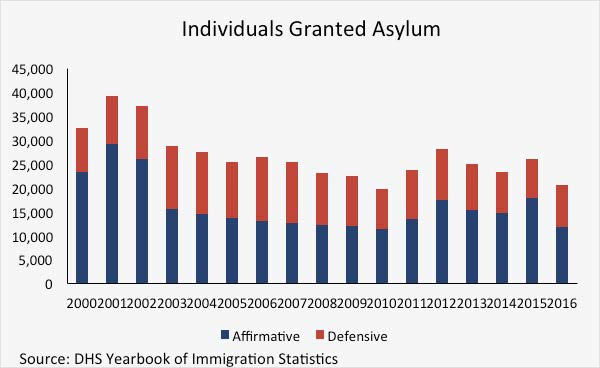The Daily Dish
December 6, 2018
The United States as a Political Refuge
Eakinomics: The United States as a Political Refuge
The United States has long been a beacon of freedom around the globe, and provides a sanctuary for those fleeing persecution. The U.S. refugee and asylum programs are the cornerstone of this expression of U.S. values: The United States is a global leader in refugee resettlement, having welcomed nearly 3.5 million refugees over the past 40 years. In addition, the United States grants asylum to 20,000 to 25,000 individualseach year. AAF’s Jacqueline Varas and Kevin Lentz provide a valuable summary and analysis of the programs.
Individuals apply for refugee status outside of the United States, while they apply for asylum from within the United States. The Refugee Act of 1980 established the modern-day system for identifying, vetting, and accepting refugees and asylees. This legislation established a uniform method for admitting refugees and authorized federal funds for their resettlement and to promote their self-sufficiency. Per this act, asylum awardees are not capped, while the president dictates the number of refugee admissions. Each fiscal year, the president consults with Congress to set a ceiling for overall refugee admissions as well as limits on how many refugees may come to the United States from each region of the world.
To become a refugee, an individual must be fleeing his or her country due to persecution or fear of persecution for religion, race, nationality, or membership in a social or political group. To be granted refugee status, applicants must be outside of the United States, meet the definition of refugee, and be of special humanitarian concern. To be granted asylum, applicants must also meet the definition of refugee and be of special humanitarian concern, but instead of applying from outside of the United States, they must apply either from inside the United States or at a port of entry. The application process for both refugees and asylees involves biometric screening, criminal checks, and vetting evidence of current or future persecution.
The Trump Administration is seeking to lower both the number of refugees (by lowering the cap) and asylees (by restricting eligibility) pursuing entry into the United States. In part because of the administration’s measures, the number of refugees admitted to the United States dropped in 2018 to its lowest level since 1980 (see below). Note that the total refugees include the “principal” refugees, who have up to two years to petition for their eligible spouse and unmarried children to join them, as well as these “derivative refugees.” In 2016, spouses and dependent children made up 63 percent of total refugee admissions.
In contrast to refugees, the number of individuals seeking asylum (see below) has increased to record levels. In 2016 (the last year of available data), 115,399 individuals applied for affirmative asylum, 39 percent more than in 2015 and the highest amount in 20 years. Similarly, the United States received 65,218 applications for defensive asylum, a 42 percent increase from 2015. The increase in asylum seekers has not been met with a corresponding increase in government capability to process applicants. Between 2010 and 2018, during a time when pending immigration cases rose by 200 percent, the number of immigration judges only increased by 60 percent. This mismatch has resulted in a record backlog of nearly 800,000 pending immigration cases in the court system and extended wait times for adjudication.
Fact of the Day
The quantity of regulatory restrictions from the Nuclear Regulatory Commission since 1976 have increased by more than 4.5 times.












